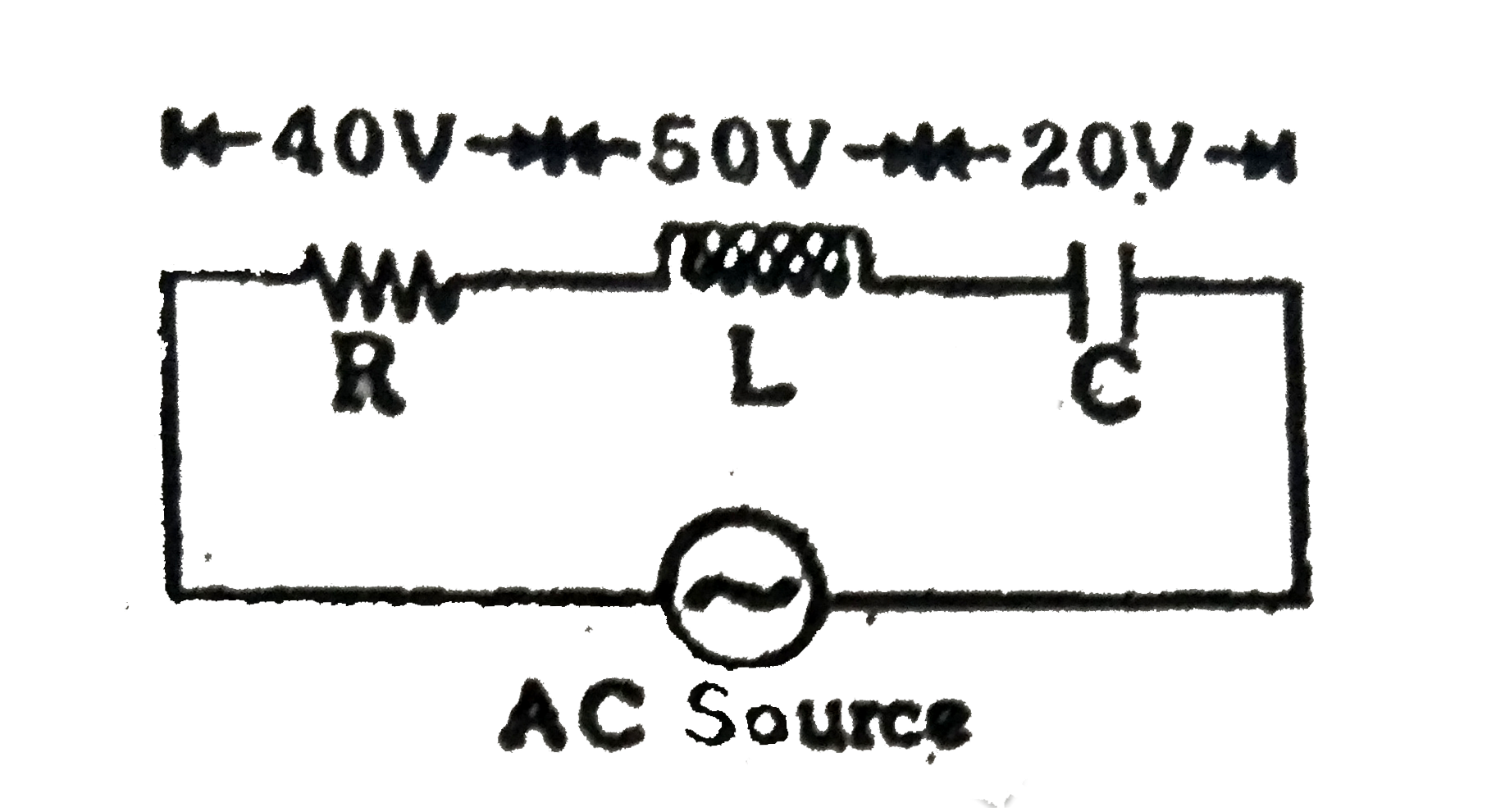In an L-C-R circuit the AC voltage across R, L and C comes out as 10 V , 10 V and 20 V respectively . The voltage across the enter combination will be
30 V
10√3V
20 V
10√2A
The correct Answer is:D
To find the voltage across the entire L-C-R circuit given the voltages across the resistor (R), inductor (L), and capacitor (C), we can use the following steps:
1. Identify the Given Voltages:
- Voltage across the resistor, VR=10V
- Voltage across the inductor, VL=10V
- Voltage across the capacitor, VC=20V
2. Understand the Relationship:
In an L-C-R circuit, the voltages across the components are not in phase. Therefore, we need to use the formula for the total voltage V across the combination:
V=√V2R+(VC−VL)2
3. Calculate VC−VL:
VC−VL=20V−10V=10V
4. Substitute the Values into the Formula:
Now substitute VR and (VC−VL) into the formula:
V=√(10V)2+(10V)2
5. Calculate Each Term:
(10V)2=100V2
Therefore,
V=√100V2+100V2=√200V2
6. Final Calculation:
V=√200V=10√2V
Conclusion:
The voltage across the entire combination is 10√2V.
- Voltage across the resistor, VR=10V
- Voltage across the inductor, VL=10V
- Voltage across the capacitor, VC=20V
In an L-C-R circuit, the voltages across the components are not in phase. Therefore, we need to use the formula for the total voltage V across the combination:
V=√V2R+(VC−VL)2
VC−VL=20V−10V=10V
Now substitute VR and (VC−VL) into the formula:
V=√(10V)2+(10V)2
(10V)2=100V2
Therefore,
V=√100V2+100V2=√200V2
V=√200V=10√2V
The voltage across the entire combination is 10√2V.
Similar Questions
Knowledge Check
In a series LCR circuit the voltage across an inductor, capacitor and resistor are 20 V, 20 V and 40 V respectively. The phase difference between the applied voltage and the current in the circuit is
A30∘B45∘C60∘D0∘
In a series resonant circuit, the ac, voltage across resistance R, inductance L and capacitance are 5V, 10V and 10V, respectively. The ac. voltage applied to the circuit will be
View SolutionIn a series LCR circuit, the voltages across an inductor, a capacitor and a resistor are 30 V, 30 V, 60 V respectively. What is the phase difference between the applied voltage and the current in the circuit ?
View SolutionIn a series LCR circuit, the voltages across an inductor, a capacitor and a resistor are 30 V, 30 V, 60 V respectively. What is the phase difference between the applied voltage and the current in the circuit ?
View SolutionIn series LCR circuit, the voltages across R, L and C are shown in the figure. The voltage of applied source

View SolutionIn a series L.C.R. circuit, the potential drop across L, C and R respectively are 40V, 120V and 60V . Them the source voltage is
View SolutionIn an a.c. circuit consisting of resistance R and inductance L, the voltage across R is 60 volt and that across L is 80 volt.The total voltage across the combination is
View SolutionIn a series L-C-R circuit the voltage across resistance , capacitance and inductance is 10 V each. If the capacitance is short circuited, the voltage across the inductance will be
View Solution
